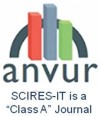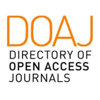Abstract
As consequence of the technology expansion of recent years, people are nowadays seeking digital interactive experiences. Museums need to understand and embrace this change by creating digital interactive exhibitions that are culturally guaranteed by the institution authority and, at the same time, can be more appealing for the general public. Amongst the new softwares available to this purpose, 3D engines are some of the hardest to handle for people not coming from the Information Technology field, creating a technological gap between the museological space and the third-millennium public’s expectations that results in a lower lever of enjoyment for the public. With the support of Unity3D, one of the most famous and reliable VR-ready 3D engines, a suite of tools called Muse-Tools was developed to reduce this gap by extending the engine’s editor functionalities to provide museums curators with enough tools to plan both real and virtual exhibitions without relying on expert programmers or artists.
Keywords
Full Text:
PDFDOI: http://dx.doi.org/10.2423/i22394303v7n1p17
References
Article Metrics
Metrics powered by PLOS ALM
Refbacks
- There are currently no refbacks.
Copyright (c) 2017 Roberto Galdieri, Marcello Carrozzino

This work is licensed under a Creative Commons Attribution-NonCommercial-NoDerivatives 4.0 International License.
SCIRES-IT, e-ISSN 2239-4303
Journal founded by Virginia Valzano





